Vadin Plateau
Vadin-Plateau
Intuition Premier Cru Extra Brut Champagne Blend
Crazy good. Light and deft, perfect RS and a fine mousse. Seek this out. — 5 years ago
Château Beau-Séjour Bécot
Saint-Émilion Red Bordeaux Blend 2014
Estate named Beau-Séjour in 1787 by General Jacques de Carle, proprietor at the time. Michel Bécot bought estate from Dr Jean Fagouet in 1969 increasing vines from 10.5 hectares to 15, acquiring Trois Moulins plateau in 1979, kept the name Beau-Séjour Bécot. Blend of 87% Merlot, 9% Cab Sauv & 4% Cab Franc. Nice berry aromas, ripe cherry & fresh raspberry flavors with notes of sweet cacao & tobacco adding some toasty notes. Firm tannins, not overpowering, lingering ending with tangy sweet oak.Tasting Sample. — 6 years ago
Domaine de la Tour du Bon
Bandol Mourvedre Blend 2014
Domaine rests atop a limestone plateau in Le Brûlat du Castellet, in the northwestern corner of the A.O.C. Bandol. Hocquard family has been farming this land since 1968, currently run by Agnès Henry. Tried ‘14 &’15 together. A blend of about 75% Mourvèdre with the rest Grenache, Cinsault & Carignan. Deep red with dark berry fruit and spice aromas. On the palate flavors of blackberry, black pepper & herb spice. Fine tannins, lingering with a fragrant ending. Consistent quality. Tasting Sample. — 7 years ago
Guy Saget
Le Grand Plateau Pouilly-Fumé Sauvignon Blanc 2017
Mrs E is into Poully Fumé now which pretty much means I am to 🤣 this was €32 in a Parisian Bistro - she says it is a Hawaiian Chablis 🤔
🍷 Light straw
👃 Chalky crushed mineral rock though smokey citrus & green fruits w/ a tropical banana driven hit & zesty grind
👄 Med body of zingy pineapple w/ a crazy tropical cocktail, citrus boom boom & a limey dry booster
🎯 Long lime driven citrus blast w/ tropical & dry mineral chalk linger — 8 years ago
Château Brane-Cantenac
Grand Cru Classé en 1855 Margaux Red Bordeaux Blend 2005
I have a six-pack of this 05. I thought after 10 years in bottle, it would be interesting to check in on its evolution. While tasty, I’ll wait another 8-10 to open another. Even after 2-3 hours in the decanter, it’s still a very young adolescent. On the nose, slightly sour blackberries & dark cherries, dark currants, baked black plum, haunting blue fruits, anise, whiff of spice, steeped tea, dry stones, dry crushed rocks with dry top soil, caramel, vanilla with fresh & dry red florals. The body is thick & full. Tannins are starting to round out. It’s velvety on the palate. The fruits are; bright, fresh & ripe and really show the greatness of the 05 vintage. Dark currants, blackberries, dark cherries, baked black plum, haunting blue fruits, baked strawberries, cherries, raspberries on the long set, dark spice, clay & loamy dry top soil with crushed rocks, dry stones, cigar with ash, graphite, dry stems, slight herbaceous character, mint, used leather, clove, caramel, vanilla, fresh & dry red florals with violets. The round acidity is about perfect. The structure and length are still strong. The balance is in harmony. As for the long finish, it’s lush, ruby, rich and well polished. Photos of; Chateau Brane Cantenac, large wood vats, Henri Lurton and Estate vines. Producer notes and history...Chateau Brane Cantenac began in the early 17th century. At the time, the estate was known as Domaine Guilhem Hosten. Even that far back, wine was produced from the property. In fact, the wine was so highly regarded it was one of the more expensive wines in Bordeaux. It sold for almost as much money as Brane Mouton. This is interesting because of who went on to buy the vineyard in the 1800’s. The Baron of Brane, also known as “Napoleon of the Vineyards”, purchased the Chateau in 1833. At the time of the sale, the estate was called Chateau Gorce-Guy. To get the funds needed to purchase the Margaux vineyard, the Baron sold what is now called Mouton Rothschild, which was at the time of the sale, known as Chateau Brane-Mouton. Not such a good move with hundreds of years in hindsight! In 1838, the Baron renamed property taking his name and the name of the sector where the vineyards were located and called it Chateau Brane Cantenac. The Chateau later passed to the Roy family, who were well-known in the Margaux appellation in those days, as they owned Chateau d’issan. Moving ahead to 1920, the Societe des Grands Crus de France, a group of merchants and growers that owned several chateaux located in the Medoc including; Chateau Margaux, Chateau Giscours, and Chateau Lagrange in St. Julien, purchased Chateau Brane Cantenac. Five years later, M. Recapet and his son-in-law, François Lurton, took over Brane Cantenac along with Chateau Margaux. Lucien Lurton (the son of François Lurton) inherited Brane Cantenac in 1956. Today, the estate is still in the hands of the Lurton family. Brane Cantenac is owned and run by Henri Lurton. After being given the responsibility of managing Brane Cantenac, it was under the direction of Henri Lurton that large portions of the vineyard were replanted. Vine densities were increased, the drainage systems were improved and the plantings were also, slowly changed. The vineyard of Brane Cantenac is planted to 55% Cabernet Sauvignon, 40% Merlot, 4.5% Cabernet Franc and .5% Carmenere. Carmenere was used for the first time in the 2011 vintage. The only other Chateau I know that still uses Carmenere is Clerc Milon. The 75 hectare Left Bank vineyard of Brane Cantenac is essentially unchanged since it earned Second Growth status in the 1855 Classification. At least that is the case with the 45 hectares used to produce the Grand Vin of Brane Cantenac. Those 45 hectares are planted surrounding the Chateau. Those vines are located just in front of the Cantenac plateau and are the best terroir that Brane Cantenac owns. They have other parcels, which are further inland and much of those grapes are placed into their second wine, Le Baron de Brane. Those additional hectares can be divided into 3 main sections. Behind the Chateau, they have 15 hectares of vines on gravel and sand, 10 hectares across the road with sand, gravel and iron and a 13 hectare parcel with gravel called Notton, which is used for their second wine. The vineyard is planted to a vine density that ranges from 6,666 vines per hectare on the plateau and up to 8,000 vines per hectare for the vines located behind chateau, in their sandier soils. The higher levels of vine density are always found in the newer plantings. The terroir of Brane Cantenac consists of deep gravel, sand and clay soil. Experiments in the vineyards are currently looking at becoming more organic in their vineyard management. Today, more than 25% of Brane Cantenac is farmed using organic farming techniques. It is expected that over time, the amount of hectares farmed with organic methods will be increased. Brane Cantenac has gone through 2 relatively recent modernization’s in 1999, when they added began adding the first of their smaller vats to allow for parcel by parcel vinification and then again in 2015 when they completed a much more complete renovation of their cellars and vat rooms. While Brane Cantenac is a traditional producer, they are no stranger to technology as they were one of the first estates to embrace optical grape sorting machines. In very wet vintages, they can also use reverse osmosis. To produce the wine of Chateau Brane Cantenac, the wine is vinified in a combination of temperature controlled, traditional, 22 oak vats, 18 concrete tanks and 20 stainless steel vats that vary in size from 40 hectoliters all the way up to 200 hectoliters, which allows for parcel by parcel vinification. 40% of the fermentation takes place in the oak vats. The oldest vines are vinified in vats that are selected to allow for separate parcel by parcel vinification. The younger vines are vinified more often together in the same vats. However, the Carmenere is entirely micro-vinified, meaning that those grapes were completely vinified in barrel, using micro-vinification techniques. This can also happen because the amount of grapes produced is so small. Some vats can be co-inoculated, meaning they go through alcoholic fermentation and malolactic fermentation simultaneously. At Chateau Brane Cantenac, malolactic fermentation takes place in a combination of French oak tanks and barrels. The wine of Brane Cantenac is aged in an average of 60% new, French oak barrels for 18 months before bottling. The initial 2 months of aging is done with the wine on its lees, which adds more depth to the wine. There second wine is Le Baron de Brane. Le Baron de Brane is not new. In fact, previously, the second wine went under the name of Chateau Notton, which took its name from one of the main parcels where the grapes were planted. During the late 1950’s and into the 1960’s, having a second wine was important as the estate declassified 3 vintages, due to extremely poor, weather conditions in 1956, 1960 and 1963. Production of Chateau Brane Cantenac is about 11,000 cases per year. — 8 years ago

Château la Grolet
Le Plateau Côtes de Bourg Merlot
Very nice. Good acidity and tannins. Floral and olive on the nose? Great value for $18.99 — 9 years ago
Ladera Vineyards
High Plateau Napa Valley Cabernet Sauvignon 2012
Wonderful cab. Smooth and silky. — 9 years ago
Eminence Whitlands High Plateau
Le Peche Mignon King Valley Pinot Noir 2008
Eminently quaffable — 10 years ago
Château Cos d'Estournel
Saint-Estèphe Red Bordeaux Blend 2004
Approachable and dense at the same time. Could use more time to hit its plateau though. — 11 years ago
Château d'Yquem
Sauternes Sémillon-Sauvignon Blanc Blend 1983
Famille Bréchet
Plateau des Chênes Lirac Grenache Blanc Blend 2015
Reminds of the Sanguis Beekeeper bottling.,
Winery notes
Not an easy wine to find, check out K&L
blend of Grenache Blanc, Clairette, and Roussanne, this wine is distinctly floral and lush, exemplifying the quality that the famed Brechet family of Châteauneuf-du-Pape’s Château Vaudieu brings to every wine in their lineup. The Brechet family has an estate in Châteauneuf-du-Pape, and just across the river from it they own a few small parcels in Lirac. This lovely little wine is at once floral, delicate, and rich, with a surprisingly weighty palate and a round quality on the tongue that enhances its depth. You might think a white from 2015 is a bit on the old side, but this little gem is just hitting its stride. With its couple of added years of age it has mellowed out, creating an almost honeyed quality in the glass that intensifies the complexity and lengthens the finish. It’s simply begging to be paired with a lightly spiced Asian cuisine such as a milder Thai dish or a traditional pork Bahn Mi. — 5 years ago
Louis Roederer
Cristal Brut Champagne Chardonnay Pinot Noir Blend 1982
One of my all time favorites, the 1982 Cristal is magnificent. Fresh, nuanced and exceptionally beautiful, the 1982 remains one of the all-time great Cristals. Apricot, almond and chamomile nuances suggest the 1982 is just starting to turn the corner into its plateau of maturity. This bottle lacks a bit of excitement, but, then again, the 1982 Cristal is not exactly the sort of wine I get to taste on a regular basis, so it is possible this is not the best showing. Hopefully, I will get a chance to taste it again soon. Even so, well-stored bottles will drink well for another decade-plus. “In my opinion, 1982 is the first vintage of climate change in Champagne,” Lécaillon explains. “Sugars were higher than we were used to seeing. As a comparison, the 1981 Cristal is also concentrated, but it is concentrated by low yields. In 1982, we had high yields and elevated ripeness, meaning it was the sun that ripened the fruit.” (Antonio Galloni, Vinous, December 2018) — 7 years ago
Domaine Marquis d'Angerville
Champans Volnay 1er Cru Pinot Noir
Deep red with ruby highlights, but Guillaume d'Angerville noted that this premier cru is typically softly extracted and light in color. Compelling, vibrant aromas of blueberry pastille, violet, licorice and spicecake. Incredibly primary and sweet, with its density leavened by harmonious acidity. Pliant dark berry flavors are complicated by hints of flowers and spices. This very pure wine has to be one of the most youthful 1999s I tasted this winter. Finishes with utterly suave tannins and outstanding length. This infant is just beginning to open and should enjoy a long plateau of maturity. D'Angerville described 1999 as "a magical vintage," noting that the yield here was at least 40 hectoliters per hectare. His father Jacques actually held back 4,000 bottles of wine in '99 but Guillaume has released most of these bottles by now to loyal clients of the domain. (Stephen Tanzer, Vinous, March 2018) — 8 years ago
Château Léoville-Las Cases
Clos du Marquis Saint-Julien Red Bordeaux Blend 1995
The 2nd wine of Chateau Leoville las Cases. Still noticeable cassis with dusty Bordeaux overtones. Waning a little in palate intensity - gradually descending from the plateau. Fine tannins Dry finish. Probably at its best 5 years ago but still very good. — 8 years ago
Château Fleur Cardinale
Grand Cru Classé Saint-Émilion Red Bordeaux Blend 2014
Vineyard is planted in a clay-limestone soil in middle of plateau. Vines mainly merlot (70%), 15% cab sauvignon & 15% cab franc. A blend of 75% Merlot, 20% Cabernet Franc & 5% Cabernet Sauvignon, very deep red with big fruit, similar to ‘12. On the palate rich flavors of layered berry fruits moving towards jammy, complex fine tannins needing more time to develop. Lingering finish with focused ending, great but needs more time. Did vertical on ‘12, ‘13 & ‘14; ‘12 was best, ‘14 most potential. — 8 years ago
Vadin-Plateau
Brut Aurelie Champagne Blend
Marie et Frederic Chauffray
La Reserve d'O Terrasses Du Larzac Syrah Grenache 2013
In 2005 Marie and Frédéric Chauffray came across the perfect plot of land—25 acres on the plateau of Arboras in Terrasses du Larzac, situated in the Langeudoc. They sold the prestigious wine shop they owned outside Paris and embarked upon the dream of making wine, together founding Domaine de La Réserve d'O. Berry fruit and cacao notes. Cherry and mocha with spice and fine tannins. Lingering finish with ending with mineral notes. — 8 years ago
Château Latour
Premier Grand Cru Classé Pauillac Red Bordeaux Blend 1945
Tasted blind. Tawny but still with a dark ruby core. Nose has diverse notes of dried cherries, brush, some soil and a little eucalyptus. Rich and has perfect balance in the mouth. With the last sip this wine had 9+ hours of air and it was still perfectly balanced. This started great and stayed on a plateau of greatness all night. — 9 years ago
Stonehaus Winery
Davenport Red Blend
A sweet fruity wine from the beautiful Cumberland Plateau of East Tennessee! A friend of mine went there on vacation so now we're wine tasting! — 9 years ago
Sileni Estates
The Plateau Hawke's Bay Pinot Noir 2013
가볍고 시원한 약간 매콤한 액간 톡 쏘는 느낌 오프너가 필요없는 — 10 years ago
Château Canon
Saint-Émilion Red Bordeaux Blend 1988
Beautiful Canon, with all characteristics of plateau calcaire Saint Emilion. — 10 years ago
Château Doisy-Védrines
Sauternes Sémillon Sauvignon Blanc Blend 1996
Half-bottle. The wine was medium amber in colour and offered orange peel, apple, honeycomb, caramel, smoke, spices, sherry and a mouldy note on the nose. On the palate the wine showed orange, peach, apple, cane sugar, caramel, smoke, spices, creamy honey, some coffee, a hint of chocolate, sherry, mild black tea and a mouldy note, paired with medium-plus acidity, a creamy honey mouthfeel and very good length. Judged by this half-bottle the wine has just passed its plateau and started its slow journey on the downward slope. A good, medium-bodied Sauternes with lots of botrytis character. Drink now. 89 — 11 years ago
Château Lynch-Bages
Grand Cru Classé Pauillac Cabernet Sauvignon Blend 2000
Mid to deep Ruby in colour. Some maturity in evidence on the rim. Cedar/cigar box aromas with black currant and cassis - classic Pauillac descriptors Only medium bodied - lacked some intensity for the vintage. Restrained - 20 years might be its limit. It will sit on the plateau but won’t improve. In summary a lovely old claret and has been better than its 5th Growth status for decades. “Lunch Bags” as old poms used to refer to it as. — 5 years ago
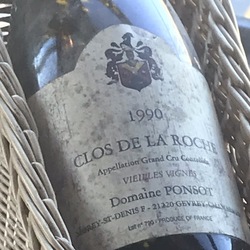
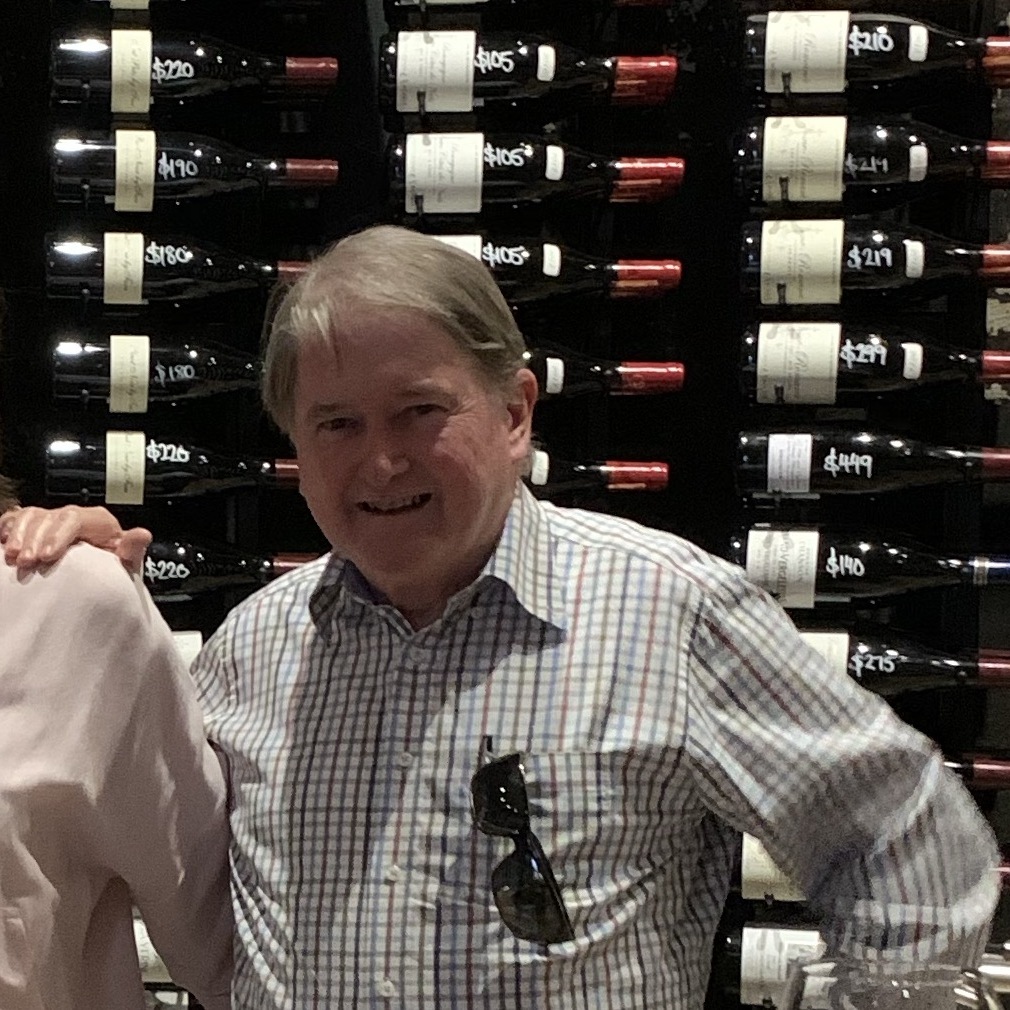

Château Léoville-Las Cases
Grand Vin de Leoville du Marquis de las Cases Saint-Julien Red Bordeaux Blend 2005
Comment later. Whoa! RP says "this dense ruby/purple wine has a stunningly pure bouquet of dark fruit, wet rocks, graphite, and subtle background toast/vanillin. Full-bodied, masculine, and very deep and concentrated, this titanic effort is at least 8-10 years away from its plateau of maturity." And I say this juicy berry is ready for duck, venison, and beef stew now. — 6 years ago
Haddad
Reserve Jordan River Mafrac Plateau Pinot Grigio 2017
Drinking in Jordan — 7 years ago
Château Lafite Rothschild
Carruades de Lafite Pauillac Red Bordeaux Blend 2003
On the nose, ripe; blackberries, sweet & sour dark cherries, cooked cherries & strawberries & hues of blueberries. Black tea, cola, soft baking spices; vanilla, light clove & cinnamon. Crushed rocks, stones, limestone, turned, moist black earth, tobacco leaf, saddle-wood, soft leather, dry & fresh dark red florals.
The body is medium edging toward full. The tannins pretty well resolved. The ripe fruits show the hot, ripe vintage. Blackberries, sweet & sour dark cherries, cooked cherries & strawberries & hues of blueberries black tea, cola, soft baking spices; vanilla, light clove & cinnamon. Crushed rocks, stones, limestone, tobacco with ash, some graphite, soft medium dark spice, turned, forest floor, powdery but edgy minerals, saddle-wood, soft leather, dry & fresh dark red florals with some violets on the finish.
This showed better with Ribeye. The Ribeye brought out a fuller, richer wine with even more complexity. 9.35-9.4 with the Ribeye. It just missed 9.2 on its own. It’s big brother the 03 “Lafite” is 💯 point Parker wine.
Photos of; Chateau Lafite, their oak vat fermenters, Estate wine and their magnificent barrel room.
Interesting history and producers notes...Lafite Rothschild has a long and interesting history dating back to 1234, even though the property was not in the Bordeaux wine business at that time.
It is has been largely believed that vines were already planted on their terroir. The owner of the estate at the time, Gombaud de Lafite left his mark, his name. Almost 1,000 years after he owned it, the Chateau is still named after him! The vines were probably in existence at Lafite for over a century, it was not until around 1680, the majority of vineyards of what we know of as Lafite Rothschild today were created. This is because on the 1680 estate manifest, there are six mentions of their Bordeaux vineyards. Jacques de Segur, earns credit for cultivating the vineyard as I wrote in my Colon Segur post last weekend. In 1695, Alexandre de Segur married Marie-Therese de Clauzel, heiress to Chateau Latour. So to dovetail that write up, within a generation, the Segur family married into two of the greatest Bordeaux vineyards, Chateau Lafite and Chateau Latour! When their son, Nicolas-Alexandre passed away, Chateau Lafite and Chateau Latour were separated.
In 1797, Chateau Lafite was sold again. In the deed of sale, Chateau Lafite was described as a Premier Cru of Medoc. This is one of the earliest mentions of what we know of today as Lafite Rothschild producing wines of what would later be classified as an 1855 First Growth.
At that time, of Lafite were managed by the Goudal family. The Goudal family were wine historians and were able to read accurate records and details of the viticulture and marketing plans for Chateau Lafite in the estates formative years. The Goudal family gets the credit for creating the cellar and saving many of the oldest bottles that remain in the cold, dark cellars, including their oldest bottle, the 1797 Lafite!
The start of the famous Rothschild family begins in 1744, with the birth of Amschel Meyer. Amschel Meyer began creating his fortune while working as a merchant at “Zum Roten Schild,” which eventually became the family name of Rothschild.
In 1798 his sons were sent to various cities to create their fortunes. Needless to say, his sons all prospered as did their children in turn. This eventually led to them wanting to own a Chateau in Bordeaux. So in 1853, Baron Nathaniel de Rothschild, an English member of the Rothschild family, purchased Chateau Brane-Mouton. As was the custom of the day, the new owner renamed it using his name and Chateau Mouton Rothschild was born.
This was followed in 1868, when James Rothschild, another member of the family purchased Chateau Lafite, which was now a coveted First Growth.
On 8 August, 1868, Baron James d’Rothschild purchased Chateau Lafite, which was sold at a public auction in Paris. It’s assumed, he bought the property for family competitive reasons looking to one up his brother, the owner of Mouton Rothschild. At that time, Mouton Rothschild was only a Second Growth at the time. But, that does not paint the entire picture. The 1855 Classification had not taken on the importance associated with it the we see it today. Plus, buying Lafite was a reasonable investment as the vineyard sold for about 8 times its earning potential.
The actual Chateau is one of the older structures in Bordeaux, as part of the building dates back to the later part of the 16th century. In 1868, the vineyard took up 135 hectares, of which 74 hectares were cultivated with vines. Production was much smaller in those days than it is today as it was between 4,000 and 5,000 cases.
Just three months after the purchase, Baron James d’Rothschild passed away and Chateau Lafite Rothschild became the joint property of his three sons; Alphonse Rothschild, Gustave Rothschild & Edmond Rothschild. Since 1868, Chateau Lafite Rothschild has remained in the hands of the of Rothschild family. The new owners renamed the estate Chateau Lafite Rothschild.
Jumping ahead to the modern age, in 1962, the Rothschild family added to their holdings when they purchased Chateau Duhart-Milon, a Fourth Growth vineyard also located in Pauillac. It was owned by the Casteja family for more than a century, Chateau Duhart Milon suffered from neglect and was in a awful condition. By the time Duhart Milon was obtained by the Rothschild family, the vineyard was down to only 17 hectare which required extensive renovations.
Baron Eric Rothschild, nephew of Baron Elie Rothschild, took over the management of Lafite Rothschild in 1974. Baron Eric Rothschild was part of the fifth Rothschild generation to inherit Chateau Lafite Rothschild. In 1984, the Rothschild family added to their holdings in Bordeaux with the purchase of Chateau Rieussec in Sauternes.
1987 was a difficult vintage, but because that was the year Lafite celebrated the inauguration of their wine new cellar, they had a lot to be excited about.
The new cellars were built under the supervision of Catalan architect Ricartdo Bofill, is both underground and circular, with a vault supported by 16 columns, giving the structure a majestic architectural style. The cellar holds 2,200 barrels, which is about 55,000 cases of wine. The construction took two years to finish and was completed in 1988.
Domaines Baron Rothschild became one of the first Bordeaux properties to invest in South America when they purchased Vina Los Vascos from a Chilean family. The owners of Lafite Rothschild continued expanding their holdings with the purchase of Chateau lEvangile in Pomerol from the Ducasse family, who owned the property for almost 100 years.
The wine making at Chateau Lafite Rothschild was managed by Charles Chevallier, who began his position in 1994. Charles Chevallier was replaced by Eric Kohler in January 2016. 2017 saw another change at the estate when Jean Guillaume Prats replaced Christopher Salin as the President of Domaines Baron Rothschild.
Perhaps, it’s the most refined of the First Growth. The wine, like all First Growth’s takes decades to mature. It has remarkable staying powers. Bottles of 1870 Lafite Rothschild discovered in the Glamis castle remain profound at more than 140 years of age! It is consider by many Master Sommeliers to be the best wine in the world.
Chateau Lafite Rothschild is one of the earliest major Bordeaux estates to bottle their own wine. In 1890, they bottled a large portion of the wine and again in 1906. Part of the estate bottling was due to requests from Negociants who were willing to pay more for Chateau bottled wines. Also, bottling was primarily done to combat piracy. At the time, it was known that merchants in some countries, like Russia were bottling cheap wine and placing labels from Lafite Rothschild on the bottles. The Koch’s famous Jefferson bottles were not the first attempt at counterfeiting.
Prior to 1996, some would say the property had its share of ups and downs. The 1960’s and 1970’s were not great for Chateau Lafite Rothschild. But since 1996, Lafite Rothschild has been producing some of the best wine in their history!
Sadly, only the wealthy can afford to purchase it. Price aside, there is no denying the level of quality. In 2003 Lafite Rothschild produced a wine that is possibly unequaled by the estate at any time in their long history. Hence, my purchase of their 03 second wine. 2009, 2010 and 2016 are not far behind.
Starting in about 2008, Lafite Rothschild became the most collectible wine from Bordeaux. Prices exploded due to demand from China as Chinese businessmen bought them as gifts or bribes depending on you look at it.
The reason this started was Lafite Rothschild paid for product placement on the number one rated Chinese soap opera on television. Characters in that show were pictured enjoying life with Lafite Rothschild and since then demand went through the roof as did priced.
However, Issac Newton had it right when he declared “What goes up, must come down.” Prices for Lafite Rothschild plummeted after 2011. By the difficult 2013, prices were finally starting to hold firm, but many of the vintages that were setting price records on a daily basis had lost close to 50% of their value.
Starting with the 2012 vintage, Chateau Lafite Rothschild began instituting anti-counterfeiting measures. From 2012 forward, to help fight, rampant counterfeiting, the estate places a seal of authenticity on the capsules of both Lafite Rothschild and Carruades de Lafite. The seal features a unique, numbered code that can be checked on their website, to verify if the wine is real.
The 112 hectare vineyard of Chateau Lafite Rothschild is planted to 70% Cabernet Sauvignon, 25% Merlot, 3% Cabernet Franc and 2% Petit Verdot. This shows a slight change in the vineyard.
While Cabernet Sauvignon remained at 70%, today there is slightly more Merlot, less Cabernet Franc and the Petit Verdot has been added since the mid 1990’s.
Located in the far north of the Pauillac appellation, only the small, Jalle de Breuil stream separates the vineyards from St. Estephe. You could divide the vineyards of Chateau Lafite Rothschild into three sections with 100 separate parcels in all. The estate has close to 50 hectares of vines located close to the Chateau, on both sides of the D2, which offers gentle rises in elevations of up to 27 meters. They also have about 50 hectares vines planted on the plateau in the Carruades sector, where they have two blocks of vines, one of which is inside the vineyard of Chateau Mouton Rothschild. It is interesting to note that even though the parcels in the Carruades sector give their name to the second wine of the estate, those vines are almost always placed in the Grand Vin.
There are also vines adjacent to, and interspersed with the vineyards of Chateau Duhart Milon. The property also consists of a smaller, 4.5 hectare parcel of vines located in the Saint Estephe appellation, “La Caillava”. The vines in St. Estephe are situated not that far from Cos d Estournel, which are located on a larger a parcel known as Blanquet. The vines in Saint Estephe are allowed to be placed into the wine of Chateau Lafite Rothschild because those vines were used to produce Lafite in 1885, at the time of the classification. The vineyards are close to their famous neighbor Mouton Rothschild.
Located just south of the Chateau, the best terroir of Lafite Rothschild has a thick layer of gravel with sand, clay, marl and limestone in the soils with rolling, gravel slopes. The gravel can be as deep as 4 meters in some parcels.
It is important to note that even though their vineyards are in the far north of Pauillac, most of the soil is pure gravel, rocks and stones. With more than 50% of the soil consisting of gravel, that is a large part of the reason Lafite Rothschild has such elegant, feminine textures and that coveted sensation of minerality.
On average, the vines are close to 40 years of age. However, Chateau Lafite Rothschild has much older vines. In fact, they have some vines that are more than 100 years of age planted in the La Graviere section. That small parcel of Merlot vines dates back to 1886. Less than 1% of the vines are that old.
Additionally, they have a small section of Cabernet Sauvignon that dates back to 1922! Other old vines range from 50 to 90 years of age! They also maintain some of the oldest Petit Verdot vines in the Medoc that was planted in the early 1930’s.
At Chateau Lafite Rothschild, between 1% to 1.5% of the vineyard is replanted every year. Vines less than 20 years of age are never included in the Grand Vin.
The vineyard of Chateau Lafite Rothschild is planted to a vine density that ranges from 7,500 to 8,500 vines per hectare. Only organic fertilizers are used in the vineyards of Lafite Rothschild.
During harvest, the goal is not to pick at the maximum level of ripeness. Instead, they are seeking a blend of grapes at differing levels of maturity, which gives the wine its unique textures, freshness, aromatic complexities and elegant sensations.
Lafite Rothschild is the largest of the First Growth vineyards with close to 112 hectares of vines. A large portion of the estate is taken up with stunningly, beautiful landscaping, lakes, trees and parkland.
At one point in time, Chateau Lafite Rothschild produced a dry white, Bordeaux wine that was sold as Vin de Chateau Lafite. The wine was produced from a large percentage of Semillon, blended with a small amount of Sauvignon Blanc. The last vintage for their white wine was 1960. The wine was sold as a generic AOC Bordeaux blanc with a simple, scripted label, black and white label.
Lafite vinification takes place in 66 vats that are a combination of 29 wood vats, 20 stainless steel tanks and 17 concrete vats that range in size from as small as 45 hectoliters up to 123 hectoliters in the concrete and as large as 270 hectoliters for the wood. The wide range of vat sizes coupled with different materials allow Chateau Lafite Rothschild to vinify depending on the needs of each specific parcel and grape variety. The stainless steel tanks and oak vats are used for Cabernet Sauvignon. The Merlot is vinified in the concrete tanks. Malolactic fermentation occurs in smaller, stainless steel tanks that vary in size from 25 hectoliters up to 60 hectoliters. At this point, Chateau Lafite Rothschild does not yet use gravity to move the fruit and juice in the cellar. It’s a good bet that a remodel is coming soon.
The average annual production of Chateau Lafite Rothschild ranges from 15,000 to 20,000 cases of wine per year, depending on the vintage. They of course make this second wine, Carruades de Lafite, which due to the name and association with the Grand Cru, has also become extremely collectible. Carruades de Lafite takes its name from a specific section of their vineyard that is located near Mouton Rothschild. Carruades is actually one of the older second wines in Bordeaux, as it was first produced in the mid 1850’s. About 100 years later during the mid 1960s, the estate reintroduced their second wine naming it Moulin de Carruades. The name was changed again in the 1980’s to Carruades de Lafite.
There is also a third wine which is sold as an AOC Pauillac that is produced from declassified fruit from Lafite Rothschild and Duhart-Milon.
The blend for Chateau Lafite Rothschild changes with each vintage depending on the character and quality of the vintage. Generally speaking, the amount of Cabernet Sauvignon in the blend ranges from 80% to 95%. Merlot is usually 5% to 20%. Cabernet Franc and Petit Verdot usually varies from 0 to 5%.
— 7 years ago




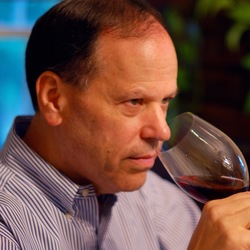
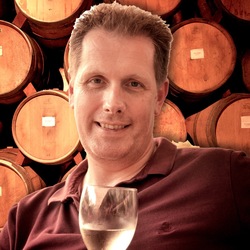


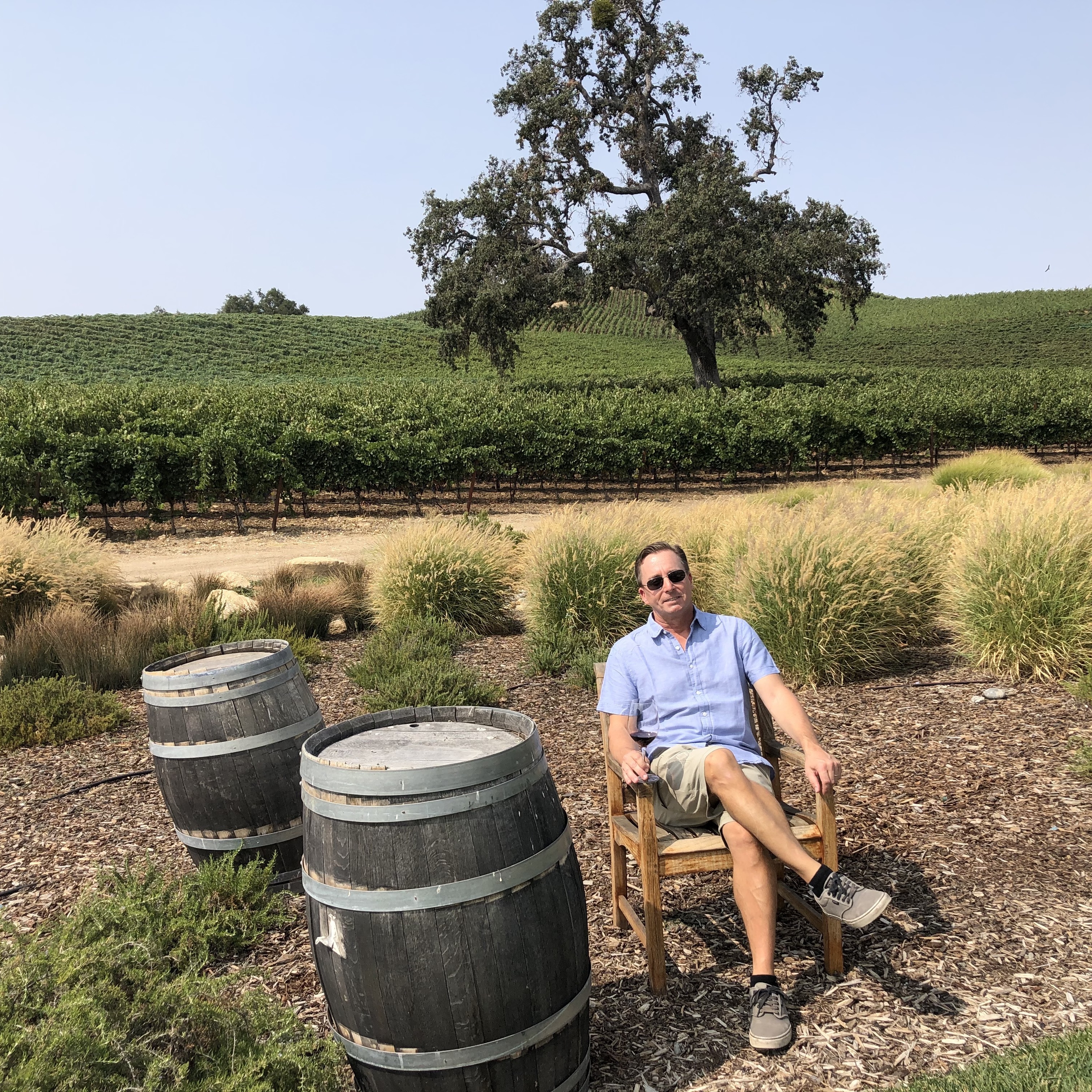

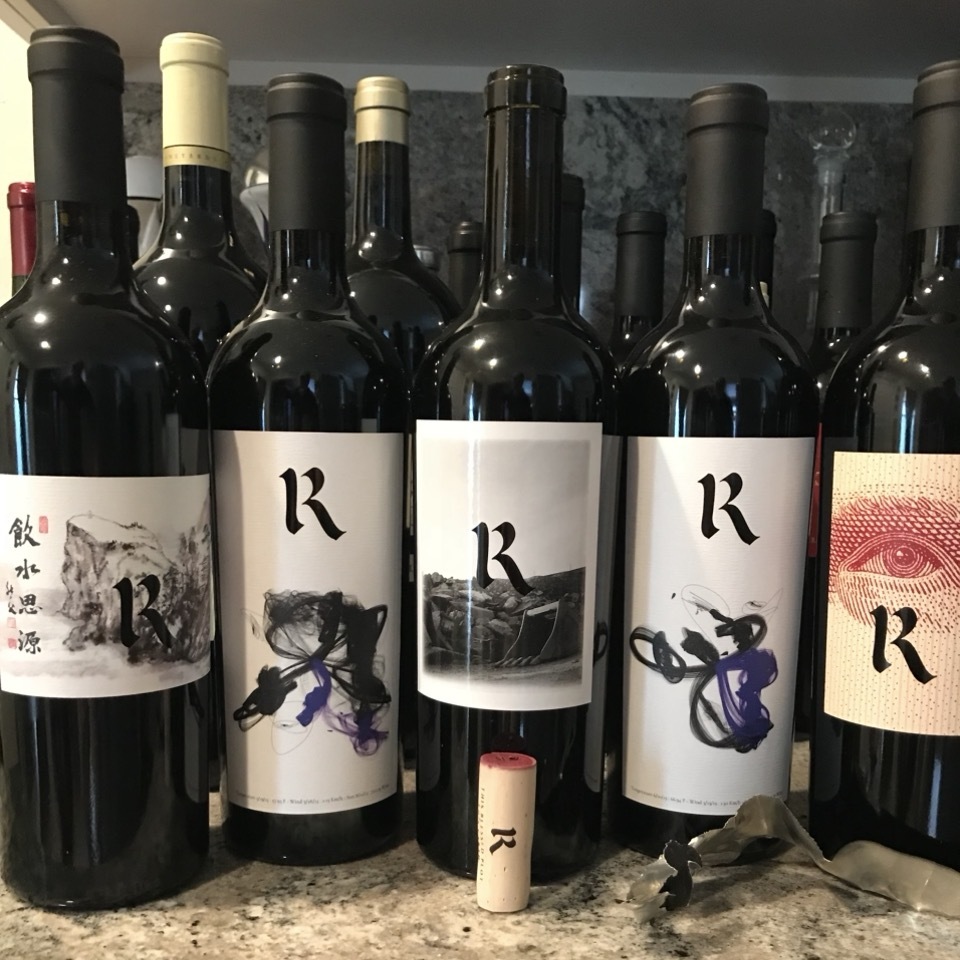
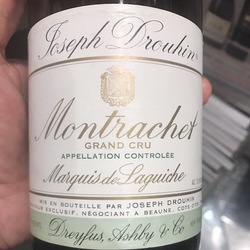
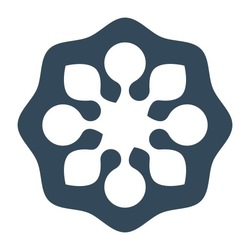
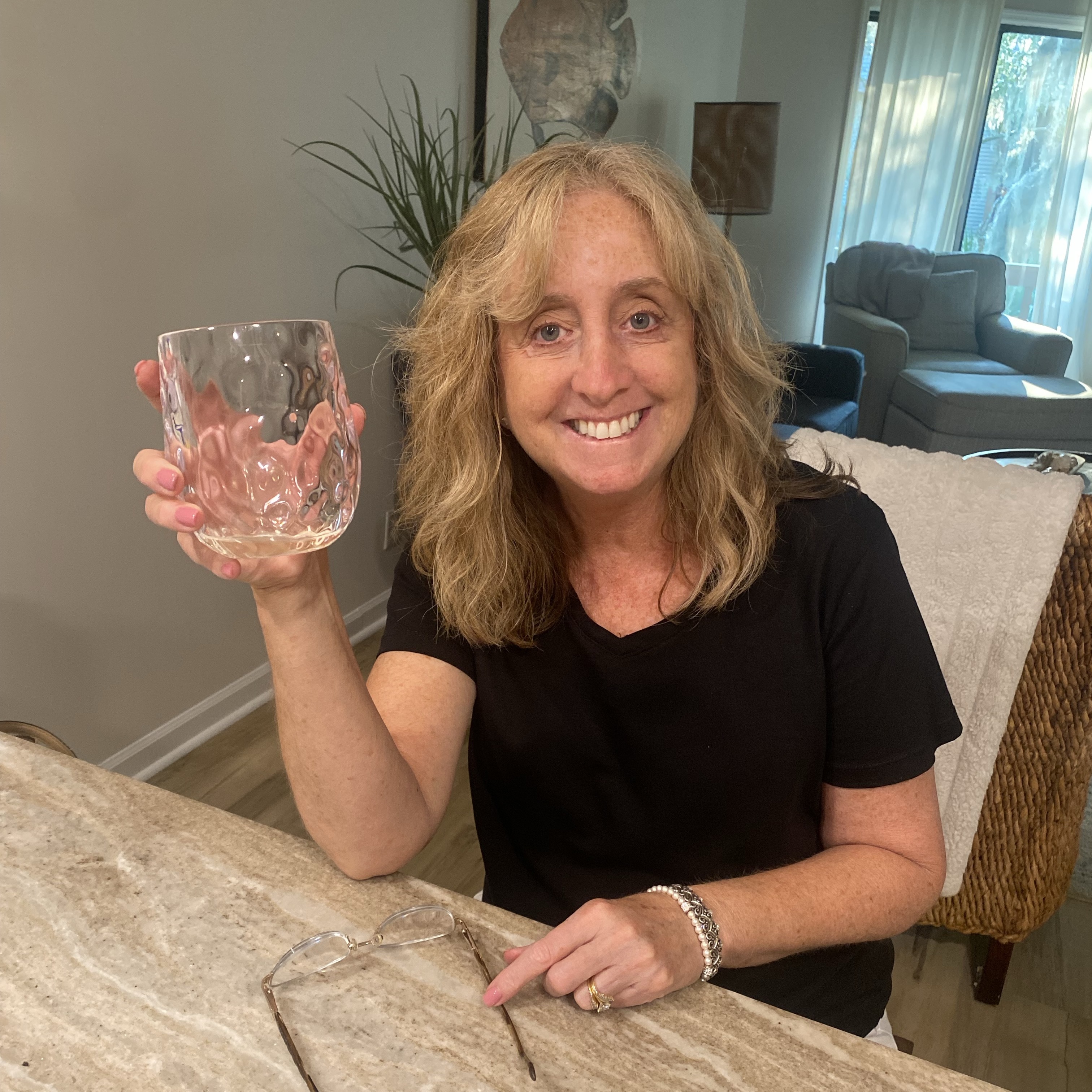



Gilbert Van Hassel
I am not a Bordeaux drinker and not great at keeping an inventory of my wines. So much to my surprise I discovered a full case of this in a dark corner. And what a glorious find this is. Wine absolutely at its plateau but another 10 to 15 years to go. Medium body, layered but not heavy. Color almost has not moved. Keeps evolving in the glass, sweet, lead pencil and still plenty of fruit left. Great effort in a rather difficult year. This makes you smile. — 5 years ago